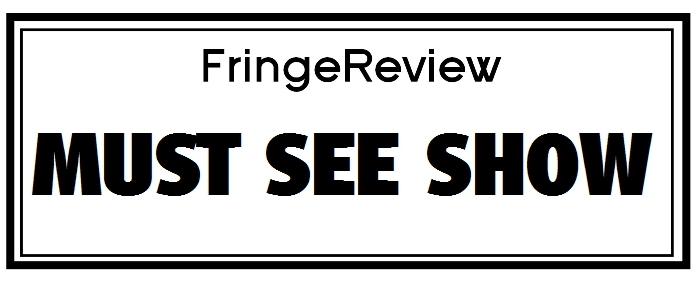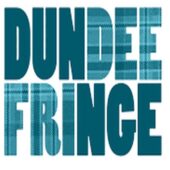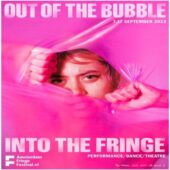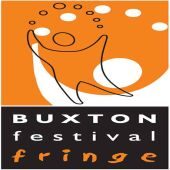FringeReview UK 2019
Blood Wedding
Young Vic

Genre: Adaptation, Drama, European Theatre, Live Music, Mainstream Theatre, New Writing, Poetry-Based Theatre, Short Plays, Theatre, Tragedy, Translation
Venue: Young Vic
Festival: FringeReview UK
Low Down
Marina Carr’s version of Blood Wedding transposes the language to Ireland, though doesn’t relocate it. Directed by Yael Farber, it’s designed with a spare set by Susan Hifferty, lit by Natasha Chivers with sound design by Emma Laxton. Isobel-Waller Bridge composes, partly in collaboration with Thalissa Teixera who sings throughout the play. Imogen Knight’s movement direction, Kate Waters fight direction and voice and dialect with Rebecca Gausnell and Brendan Gunn sweep into one spectacle.
Review
Frederico Garcia Lorca’s first play in his great trilogy – Blood Wedding from 1932 – is the most elemental: nearest to his poetry, towards the end it threatens to hang lyric fire. It’s still a masterpiece and crucially needs an adaptation to bring out flint and fire without floweriness. In English it can seem impossibly florid, though, and creak self-consciously.
Marina Carr’s version transposes the language to Ireland, more specifically her native County Offaly in this Young Vic production. She des not crucially, in her collaboration with director Yael Farber, relocate the action there. Black Madonnas of Montserrat, and references to ‘moors’ and other Andalusian specifics are rendered vibrantly. Some Catholic references like Lady of the Sorrows are naturally common to both cultures. Since Lorca was early on influenced by the poetic language of J.M. Synge’s plays, there’s a symmetry and Carr triumphs in it.
The tale of an abducted bride and consequent slaughter isn’t just framed in a two centuries’ blood feud between the Felix and Gracias, it informs it. As Olwen Fouéré’s inexorable Mother intones ‘The time of blood is coming. It was never really gone.’ Gavin Drea’s sullen-voiced, powerful Leonardo Felix, the only named character had courted Bride but her Father turned away his penury. Is his desire a kind of revenge now? Who does Leonardo truly desire? Bride later has an answer.
Leonardo’s subsequently married Scarlett Brookes’ Wife, whose explicit language, despite her second child coming, upbraids him for sexual neglect. Using the Bride’s imagined stockings to incite him she attempts seduction: ‘a climbin’ rose slitherin’ all the way up to the gates of paradise’ and on his pushing her away Wife complains she ‘I’m the one who should be up on your white horse. I’m your white horse.’ We’re reminded of Lorca’s Gypsy Ballads. It’s the briefest, sexiest scene, yet Wife’s frustrated. In an important way, Leonardo and Bride though they wish to consummate their love, are curiously transcendent characters, enacting some blood-compelled tragedy.
Farber’s pace for most of the play describes every-decreasing circles. The swept set, often with a simple table brings Brid Brennan’s ambivalent Weaver who like Thalissa Teixera’s singing Moon shimmers part in the world, part comments on it from another – the Weaver herself blindfolded her horse and rode it over a cliff to escape pursuers, she later confides.
Brennan like the magnificently flinty Fouéré’s Mother seem lodestars, warily neighbourly, also circling each other as Weaver tries to appease Mother’s innate suspicion of Bride’s gypsy blood, the fate of Bride’s mother, stoned and hanged for adultery. Annie Firbank’s glinting Housekeeper is more fun: though equally senior she relishes contemplating the sexual joy she never had, allowing Groom to hoist her aloft in a dance; a rare light-veined moment. Though Steffan Rhodri gives Father a convincing life and a hand in the climax, his part is a sullen helpmeet to tribe ritual, not an initiator.
We first met Aoife Duffin’s Bride when she’s presented by David Walmsley’s hulking though hesitant Groom. Mother’s gift of pearl rosary is scorned and you see how forced this marriage is. The subsequent action seems inexorable as parts of the stage show Drea connecting to a hoist literally circling on his imagined horse; you know there’ll be a symmetry repeating it with Bride. The set itself slides a charcoal and olive-dark platform on and off, and a drawbridge upstage opens out onto a solitary bed, at a crucial moment quietly deserted by Bride.
Duffin’s a knot of intensity, driven here not even by desire for sex so much as life. She’s compelling as she spits out scorn even for Leonardo, shuddering with reluctant tenderness. And she can rage at all but sympathetic fateful Weaver. Their final colloquy is almost the most moving scene.
Teixera’s white-suited Moon mesmerically moves the action thorough commentary, in two languages as the congregation splits and seeks the flown couple. Gender roles in Blood Wedding suggest it’s the men who align with fate and feud, the young women, Wife and Bride, with Moon’s sympathy, who grasp at joy and an end to it. It’s the seemingly life-affirming bare-chested Leonardo though who realizes flight’s useless and faces Groom in a ritual death. It’s Bride who wants life, an end to ritual machismo. Farber and Carr bring out particularly this ferocious striving against ‘tribe’ a word they all use of themselves.
There’s good work too from Woodcutters Faiaiz Mbelzi and Roger Jean Nsengiyumva, in a terse colloquy of sympathy and fatalism. Indeed, the work’s ideally cast from the central roles of Duffin, Drea, Fouéré, Brennan and Teixera through to the smallest exchanges.
This production designed with a spare set by Susan Hifferty, lit by Natasha Chivers with a probing duskiness, it almost sculpts into the sound design by Emma Laxton. Isobel-Waller Bridge composes an moon-drenched haunted score, partly in collaboration with Thalissa Teixera who sings Moon throughout the play. Imogen Knight’s movement direction, Kate Waters fight direction and voice and dialect with Rebecca Gausnell and Brendan Gunn sweep into one spectacle.
It’s Bride who tells Mother. ‘It wasn’t me Leonardo wanted. It was your son’ and Duffin’s magnificent lyrical defiance compels attention ensuring this final scene almost doesn’t drag. ‘There are evil times comin’ and worse down the line’ Mother speaks with terrifying prophesy of the coming Civil War. Ritual and tribe was about to be writ large. Its elegy was already written. Its warning, in the glint of knives is just one of many resonances we live with, alongside new schisms. In several ways, this is about as good as it gets.

































